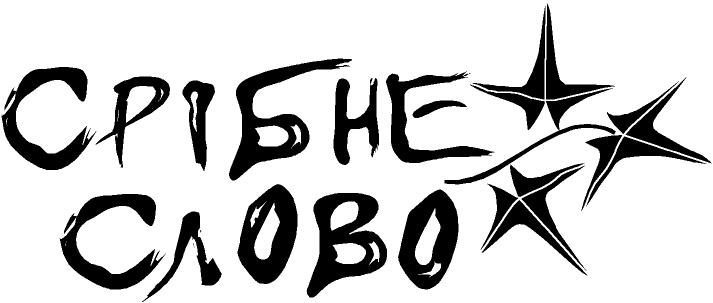- Рубрики
- Філософія, психологія, педагогіка
- Історія
- Політика, право
- Економіка
- Математика
- Фізика
- Хімія, хімічна технологія
- Біологія, валеологія
- Геодезія, картографія
- Загальнотехнічні науки
- ІТ, комп'ютери
- Автоматика, радіоелектроніка, телекомунікації
- Електроенергетика, електромеханіка
- Приладо-, машинобудування, транспорт
- Будівництво
- Архітектура, містобудування
- Мовознавство
- Художня література
- Мистецтвознавство
- Словники, енциклопедії, довідники
- Журнал "Львівська політехніка"
- Збірники тестових завдань
- Книжкові видання
- Наукова періодика
- Фірмова продукція
Василиха Христина, Яцук Василь, Здеб Володимир, Яцук Юрій. Вдосконалення цифрових термометричних засобів для досліджень сонячних колекторів
УДК 681.7.08; 536.6.081
ВДОСКОНАЛЕННЯ ЦИФРОВИХ ТЕРМОМЕТРИЧНИХ ЗАСОБІВ
ДЛЯ ДОСЛІДЖЕНЬ СОНЯЧНИХ КОЛЕКТОРІВ
© Василиха Христина, Яцук Василь, Здеб Володимир, Яцук Юрій, 2016
Національний університет “Львівська політехніка”, кафедра метрології, стандартизації та сертифікації,
вул. С. Бандери, 12, 79013, Львів, Україна
Проаналізовано вимоги до метрологічних параметрів цифрових вимірювачів температури та різниці температур для досліджень сонячних колекторів. Подано результати експериментальних досліджень взаємозамінності напівпровідникових перетворювачів температури з метою створення температурних сенсорів. Встановлено, що у цифрових термометричних засобах найдоцільніше використовувати послідовно сполучені транзисторні діоди, у яких можна зменшити значення розкиду спадків напруги та близькі до гранично можливого значення коефіцієнта ідеальності. Розроблено структури цифрових вимірювачів температури та різниці температур і вдосконалено методики коригування їх адитивних і мультиплікативних складових похибки.
Ключові слова: діодний перетворювач температури, цифрові вимірювачі температури і різниці температур, методика калібрування, коефіцієнт ідеальності напівпровідникових сенсорів, сонячний колектор.
Проведен анализ требований к метрологическим параметрам цифровых измерителей температуры и разности температур для исследований солнечных коллекторов. Представлены результаты экспериментальных исследований взаимозаменяемости полупроводниковых преобразователей температуры с целью создания температурных сенсоров. Установлено, что в цифровых термометрических средствах целесообразно использовать последовательно соединенные транзисторные диоды, при этом можно уменьшить значения разброса падений напряжения и близкие к предельно возможному значения коэффициента идеальности. Разработаны структуры цифровых измерителей температуры и разности температур и усовершенствованы методики корректировки их аддитивных и мультипликативных составляющих погрешности.
Ключевые слова: диодный преобразователь температуры, цифровые измерители температуры
и разности температур, методика калибровки, коэффициент идеальности полупроводниковых сенсоров, солнечный коллектор.
The analysis of requirements for metrological parameters of digital temperature meters and temperature difference meters for solar collectors’ investigations been done in the article. Under the regulations requirements a minimum temperature drop not exceed 1,5 K, and for the maximum relative error of temperature measurement not more ±2% it provide the absolute error of temperature drop measurement near ±0,030 K, and their measurement unit list significant digit 0,01 K. This error value of temperature drop measurement can be achieved if it makes a temperature sensor calibration in the precision thermostat or rigorous recruiting of sensors pairs.
The experimental research of the transistor diodes interchangeability to create precise, stable and low cost temperature sensors is carried out also. It showed that transistor diodes should be given preference, which fabricated in the same technological cycle especially as SMD transistors. The theoretical assumption about the initial voltage spread reduction of the SMD transistors compared with traditional volumetric installation transistors is experimentally confirmed. The spread values were reduction from ±5 K for volumetric installation to ±0,3 K for SMD transistors. For further spread reduction of the forward bias diode voltage it proposed connect transistors in series, which additionally allowed increase their sensitivity. The temperature sensor prototype as series-connected transistors are mounted on printed circuit boards and sealed (placed in thermocontractable tube with the screened leads) to prevent water ingress. The entire experimental setup was placed in a passive water-zero thermostat to ensure the minimum values of the temperature gradients among the several sensors.
Among the several mass-produced investigated type transistors, it was selected two transistors type BCW61C and BC849C, which should be the lowest values of the voltage drop spread ±457 µV (±0,22 К) and ±406 µV (±0,20 К) accordingly. While design this enables the provision of measuring temperature drop standard deviation of five series connected diodes not exceed with a simultaneous increase the temperature and temperature drop measurement sensitivity to 10 mV/K.
While the digital thermometers design it very important are the ideality factor and the base resistance of the diodes-transistors, which their means are determined from the proposed equations. On the experimental data basis the transistors type BCW61C and ВС849С ideality factors was calculated η=1,18380 and η=1,00048 respectively, and their base resistance amounted near 50 Ohm which corresponds to practical recommendations for the selection transistors as temperature sensors.
The structures of digital temperature and difference temperature meters were developed too. The methods of adjusting their additive and multiplicative error components are improved. The digital temperature meter structure contains the current-defining generator, current resistor, several standard resistors, voltage reference, ADC and device controller. The digital thermometer transform function was set, which allowed establish the metrological requirements for its constituent elements. It shown that designed scheme should be used amendments method in order to set the precision thermometer requirements while the relaxed instrumental error their components requirements. The digital meter of temperature difference can be built on the basis of series-connected diode sensors that provide high accuracy, sensitivity, resolution and performance, especially when used in the radiometer with electrical substitution. Two possible methods of digital thermometer introducing amendments in the analog and digital forms is described. It also showed their strengths and weaknesses and advised to use tuning in digital form.
Structure of designed digital temperature difference meters is based on the ADC implementation with differential inputs, which it both signal exits was connected to the both current generators outputs. The ADC reference voltage formed by the precise resistive voltage divider. In the manufacturing process it can be adjusted as mentioned additive and multiplicative error components by using two temperature points. Adjustments additive error component generally convenient to carry an arbitrary temperature, for example, equal to ambient temperature. And to adjust the multiplicative error component it advisable to use a standard thermometer and further the conversion factor changing by any of the conversion path scale elements. If ten semiconductor temperature sensors implement it significantly reduced requirements for sensitivity threshold of second devise transformative elements because LSB units 0,001 K complies the input voltage 10 µV, that is much higher than the sensitivity threshold of modern scale elements.
Except proved the feasibility of the proposed temperature sensors in designed digital meter temperature and the temperature difference, they should be applied in other areas such as food processing industry and individual heating counters, namely accounting of consumed heat by individual consumers.
Key words: diode converter temperature, digital meter temperature and the temperature difference, calibration method, ideality factor of semiconductor sensors, solar collector.
Література – 22.



















